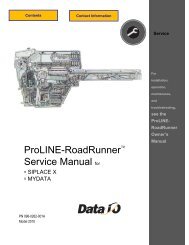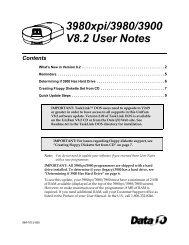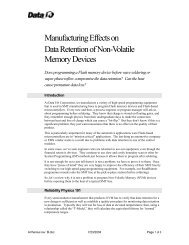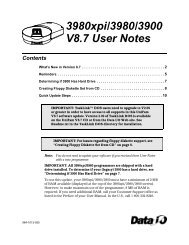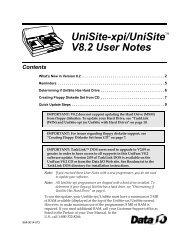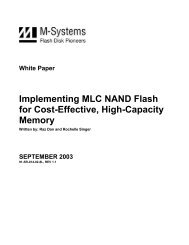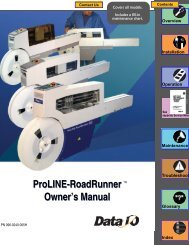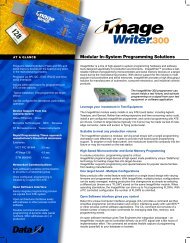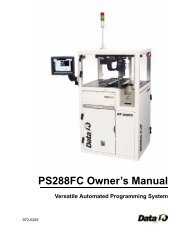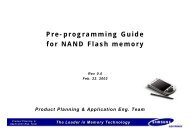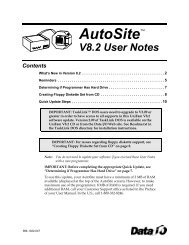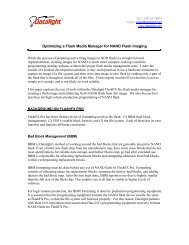3980xpi Users Manual - Data I/O Corporation
3980xpi Users Manual - Data I/O Corporation
3980xpi Users Manual - Data I/O Corporation
Create successful ePaper yourself
Turn your PDF publications into a flip-book with our unique Google optimized e-Paper software.
Intel MCS-86 Hexadecimal Object, Code 88<br />
00 — <strong>Data</strong> Record<br />
01 — End Record<br />
Translation Formats<br />
The Intel 16-bit Hexadecimal Object file record format has a 9-character<br />
(4-field) prefix that defines the start of record, byte count, load address, and<br />
record type and a 2-character checksum suffix. Figure 5-15 shows a sample<br />
record of this format.<br />
Figure 5-15. Intel MCS-86 Hex Object (example)<br />
Address<br />
Start Character<br />
Byte Count<br />
Offset Address<br />
:020000020000FC Extended Record<br />
:10000000FFFFFFFFFFFFFFFFFFFFFFFFFFFFFFFF00<br />
:10001000FFFFFFFFFFFFFFFFFFFFFFFFFFFFFFFFF0<br />
:10002000FFFFFFFFFFFFFFFFFFFFFFFFFFFFFFFFE0<br />
:10003000FFFFFFFFFFFFFFFFFFFFFFFFFFFFFFFFD0<br />
:10004000FFFFFFFFFFFFFFFFFFFFFFFFFFFFFFFFC0<br />
:00000001FF End-of-File Record<br />
Checksum<br />
Record Type<br />
Checksum<br />
The four record types are described below.<br />
This begins with the colon start character, which is followed by the byte count<br />
(in hex notation), the address of the first data byte, and the record type (equal<br />
to 00). Following these are the data bytes. The checksum follows the data<br />
bytes and is the two's complement (in binary) of the preceding bytes in the<br />
record, including the byte count, address, record type, and data bytes.<br />
This end-of-file record also begins with the colon start character. This is<br />
followed by the byte count (equal to 00), the address (equal to 0000), the<br />
record type (equal to 01), and the checksum, FF.<br />
02 — Extended Segment Address Record<br />
LEGEND<br />
Nonprinting Carriage Return, line feed, and nulls determined by null count<br />
Checksum<br />
<strong>Data</strong><br />
Records<br />
This is added to the offset to determine the absolute destination address. The<br />
address field for this record must contain ASCII zeros (Hex 30s). This record<br />
type defines bits 4 to 19 of the segment base address. It can appear randomly<br />
anywhere within the object file and affects the absolute memory address of<br />
subsequent data records in the file. The following example illustrates how the<br />
extended segment address is used to determine a byte address.<br />
<strong>3980xpi</strong>/3980/3900/2900 User <strong>Manual</strong> 5-23<br />
0087-4




